Since some of our agritainment/agritourism farm clients offer weddings and wedding receptions, I dug into the data to see what trends I could find for that segment of their businesses. We are currently working with one farm with a large renovated barn and picturesque outdoor area to develop renovation plans for some of their facilities and management and marketing enhancements to grow their wedding and other group business.
In a previous blog, I discussed the growing socioeconomic stratification of out-of-home entertainment and art, how they are becoming more gentrified with the higher socioeconomic representing an increasing share, now 7 in 10 dollars of all fee and admission revenues. I found that the same gentrification trend is occurring with marriages and weddings.
Weddings are a big business generating $52 billion (yes, that’s billion) in 2019
More than 1 in 4 weddings are for the 25-29 age group (26.4%), followed by age 30-34 as the next highest (18.4%).
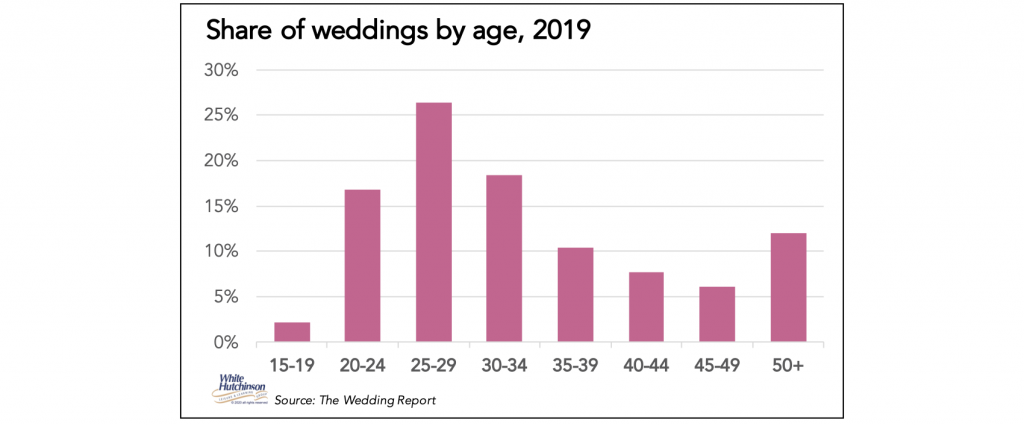
The average 2019 wedding cost $24,675. One-quarter of weddings (26%) cost over $20,000 and account for more than one-half of all wedding spending (55%).

Although the population is growing in number, the number of weddings through 2019 has held steady as more couples decide to live together and cohabitate, causing marriage rates to decline. From 2000 to 2018, the marriage rate dropped from 8.2 per 1,000 population to 6.5, the lowest rate since the federal government began keeping data in 1867.
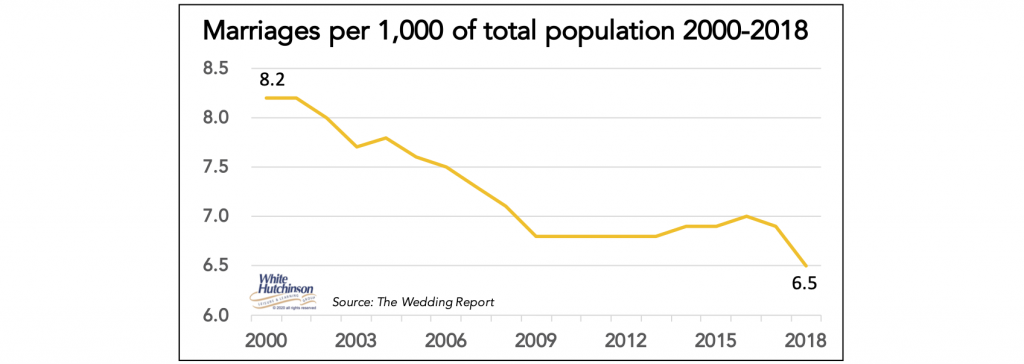
The Wedding Report estimates that the coronavirus will cut the number of 2020 weddings almost in half, with some deferred until 2021. Even with many being delayed, they project the average number of annual weddings for 2020 and 2021 will be down by 9% over the number in 2019.
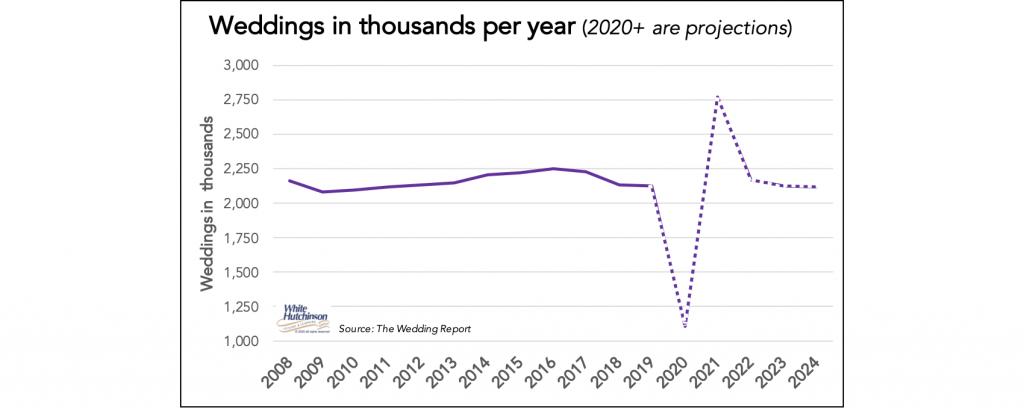
Economic inequities exacerbated by the pandemic are disproportionately harming the lower socioeconomic the most. This could drive down marriage rates for many more years into the future. Therefore, the projections made by the Wedding Report earlier in the year may be unduly optimistic. The longer the pandemic lasts, the more likely the marriage rate will continue to decline due to travel and social-gathering restrictions coupled with increasing financial insecurity and a lingering economic downturn that will last past the end of the pandemic.
Annual wedding sales in 2019 were almost identical to 2008, $52.5 billion vs. $52.1B in 2008. However, when sales are adjusted by inflation into equivalent 2019 dollars, wedding sales are down by 15% during that same period.
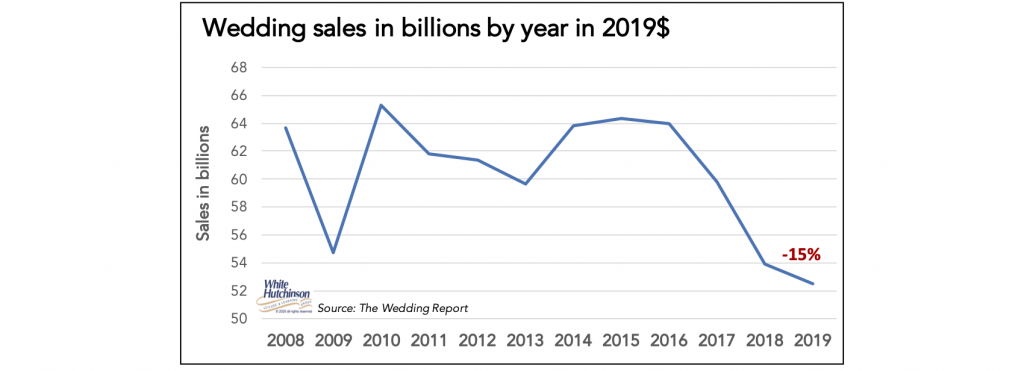
Although the overall marriage rate is declining, the marriage rate for people aged 33-44 in the top quintile of income has increased from 79% in 2000 to 80% in 2018 (most recent data available). The marriage rate for the middle-class aged 33-44 (here defined as the middle 60% of household income distribution) has declined significantly since 2000, dropping from 71% to 66% in 2018. Likewise, the marriage rate for the lowest quintile of household income has fallen from 46% to 38%. Amid growing economic inequality and resulting financial insecurity, the institution of marriage has become a luxury experience enjoyed by the most prosperous Americans.
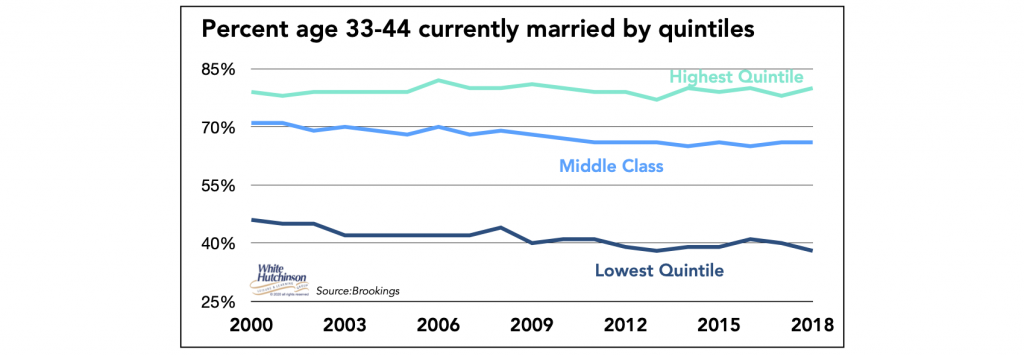
Here’s how overall 2019 wedding spending breaks down for different income groups.
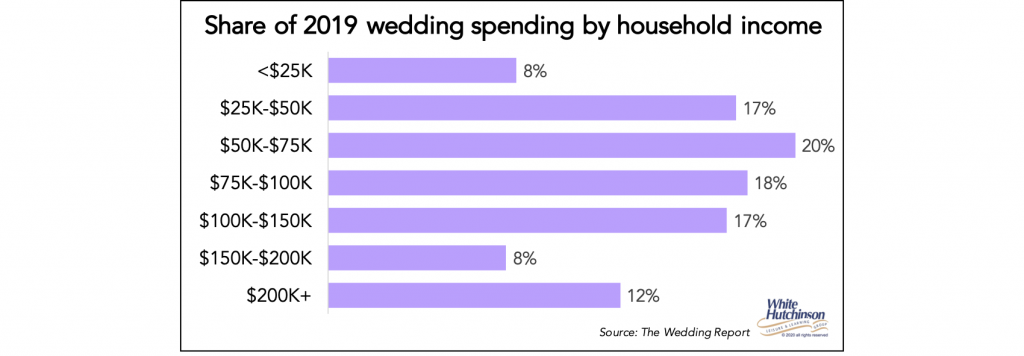
Examining the marriage rate by education finds that people with at least a bachelor’s degree are in no rush to give it up. They have the highest marriage rates.

The share of bachelor’s and higher degree marriages increased from 29% in 2008 to 36% in 2018, while the percentage for all the lower educational attainment levels has been on the decline.

In 2019, people with a bachelor’s or higher degree had grown to account for 45% of all wedding spending.
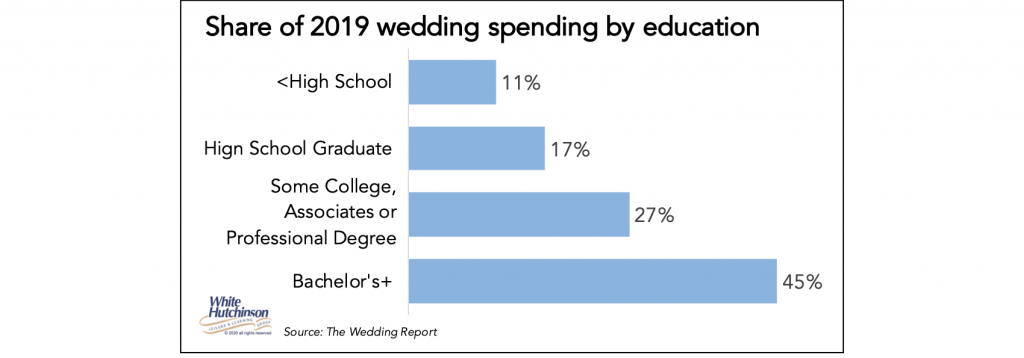
As with many other income-sensitive trends, the coronavirus pandemic and its economic downturn are sure to further accelerate the gentrification of both marriage and weddings.
Farms have become very popular wedding venues due to their low-key, rustic aesthetic and picturesque setting, which is very Instagrammable. Their growth shows no sign of slowing down. The Knot’s wedding-planning website reports that farm, barn, and ranch reception venues increased from 2% in 2009 to 18% of all wedding receptions in 2019, second only to banquet halls at 21%, which were down from 27% in 2009.
Weddings are most popular in September and October, a very picturesque time of the year on farms.
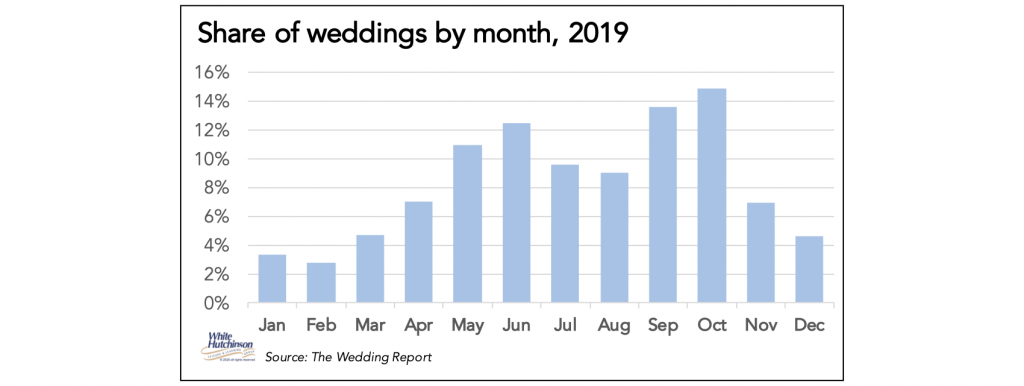
The popularity of farm weddings is likely to continue to grow. For the first time ever in a special Gallup poll’s history, Americans have rated farming and agriculture as the business or industry they feel most positive about.
The national poll conducted July 30 through August 12 asked Americans whether their overall view of certain businesses and industries was very positive, somewhat positive, neutral, somewhat unfavorable, or very negative.
Farming and agriculture ranked No. 1 with a total positive rating of 69% and a net positive rating (total positive minus total negative) of 58 percentage points. It was the first time in the poll’s 20-year history that farming and agriculture grabbed the top spot. The industry’s total 69% positive response was an 11-point increase over last year’s 58% rating.
The grocery industry ranked No. 2 at 63% and 51%, and the restaurant industry ranked No. 3 at 61% and 46%. It appears that businesses dealing with growing, selling and serving food have gained the highest rating of all industries.
With marriage rates on the decline for all but the higher socioeconomic who are the big spenders, that is the market wedding venues need to target. At the same time, the popularity of non-traditional weddings and receptions at farms should continue to grow.
Follow me on Twitter and Linkedin – I try to post news and information relevant to the location-based leisure, LBE and FEC industries a few times every weekday.
To subscribe to my blog, click here




